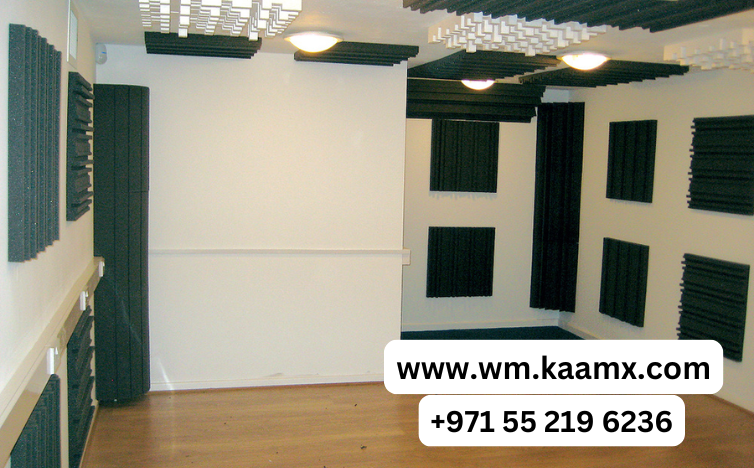Acoustic treatment is essential for controlling sound reflections, reducing echoes, and improving audio clarity. But how much treatment does your space actually require? The answer depends on several factors, including room size, shape, purpose, and existing sound issues.
Whether you’re setting up a home studio, office, or entertainment room, the right amount of acoustic treatment ensures optimal sound without over-treating the space. Let’s break down the key considerations.
Factors Affecting Acoustic Treatment Requirements
 1. Room Size and Shape
1. Room Size and Shape
Larger rooms generally need more acoustic treatment because sound waves travel farther, leading to more reflections. Oddly shaped rooms (with uneven walls or high ceilings) may also require additional treatment to manage flutter echoes and standing waves.
2. Primary Use of the Space
-
Recording Studios: Need extensive treatment (absorption and diffusion) for accurate sound monitoring.
-
Home Theaters: Require balanced absorption to prevent echoes while maintaining sound richness.
-
Offices/Podcast Rooms: Benefit from moderate absorption to reduce reverb and improve speech clarity.
3. Existing Sound Problems
Identify issues like excessive echo, bass buildup, or uneven frequency response. A simple clap test can reveal flutter echoes, while a frequency analyzer can detect problematic bass frequencies.
4. Type of Acoustic Treatment
-
Absorption Panels: Reduce mid and high-frequency reflections.
-
Bass Traps: Control low-frequency buildup in corners.
-
Diffusers: Scatter sound waves to maintain a natural acoustic environment.
How to Calculate the Right Amount of Treatment
Step 1: Assess Key Reflection Points
The “mirror trick” helps identify first reflection points—place a mirror on walls while sitting in the listening position; where you see speakers, treatment is needed.
Step 2: Treat Corners for Bass Control
Bass traps in corners absorb low frequencies, which are harder to manage with standard panels.
Step 3: Cover 20-30% of Wall Space (General Rule)
For moderate treatment, covering 20-30% of walls with absorption panels is a good starting point. Adjust based on room response.
Step 4: Test and Adjust
After initial treatment, test the acoustics and add more panels if needed. Over-treatment can deaden a room, so balance is key.
Common Mistakes to Avoid
-
Over-Treating: Too much absorption can make a room sound unnaturally dead.
-
Ignoring Bass Frequencies: Low-end buildup is a common issue—bass traps are essential.
-
Poor Placement: Randomly placing panels without targeting reflection points reduces effectiveness.
Professional Acoustic Solutions by Kaamx
If you’re unsure about the right amount of acoustic treatment, professional assessment can help. At Kaamx, we provide tailored acoustic solutions for studios, offices, and home theaters, ensuring optimal sound quality without guesswork.
Contact Muhammad Shaheen Carpentry at 971 55 219 6236, and discover the transformative science of soundproofing for your space.
Final Thoughts
The right amount of acoustic treatment depends on your room’s unique characteristics. Start with key reflection points and bass traps, then adjust based on sound tests. A well-treated space enhances audio clarity, whether for music, movies, or meetings.


Add Comment